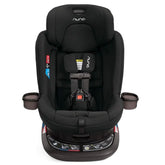10 Helpful Tips for How to Handle Picky Eaters

Updated 26 Dec 2024
Whether they love chicken nuggets and carb-loading or turn their nose up at anything green, many children develop a rather finicky palate when it comes to what they’ll eat. Picky eating is not uncommon and often starts in the toddler years. While it’s incredibly frustrating for parents and caregivers, it’s essential not to give up on efforts to encourage your child to consume a variety of foods.
What Do You Do With an Extremely Picky Eater?
The OXO Tot Perch Booster Seat with Straps boosts tots from 15 months up to the perfect table height on any grown-up chair. A 3-point harness with easy-to-adjust straps keeps tots secure in their seat and can be removed when your tot becomes a big kid (3+ years). Conveniently store Booster Straps underneath the Seat's cushion when not in use. The Perch Booster collapses quickly and easily for convenient travel and compact storage and a removable, soft cushion resists stains and is a cinch to clean. Non-skid feet keep Booster securely in place on any style sea. The Perch Booster is BPA, Phthalate and PVC free.

How to Help a Picky Eater Child
1. Sit down together as a family.
Share a meal all together as often as possible. Limit distractions from the television and put away cell phones and tablets during mealtime. Focus on family time and conversation. Prepare one healthy, well-balanced meal for the entire family. Don’t make separate food for picky eaters! Include at least one food you know your little one will enjoy as part of each meal. Try not to obsess about how many bites of green beans your child ate that night. Concentrate on the joyful memories you are creating around the family table and the opportunities to model healthy meals for picky eaters.
2. Avoid power struggles
If your child isn’t hungry, don’t force them to “clean their plate.” Those last few bites simply aren’t worth the battle. Research shows that forcing food doesn’t make a child less picky. Instead, it can cause your little one to distrust their own appetite and make them think they’re unable to regulate their own hunger cues. Kids need to learn to listen to their own bodies and use hunger as a guide. Punishing or pressuring kids to eat something they don’t want may backfire and cause them to have an aversion to something they’d otherwise enjoy.
3. Be consistent
Just because they didn’t like it once, don’t stop trying. Continue trying new dinner ideas for picky eaters and offering food your child previously disliked. Remember, research shows it may take anywhere from 10 to 20 times to taste something new before a child will accept it. Another benefit of consistency: having regularly scheduled mealtimes and limiting snacks beforehand can help make sure your little one is feeling hungry when new foods are presented.
With soft colors and a clean design, this Mushie Dinnerware Fork and Spoon Set set is simple and elegant—and easy for your toddler and child to hold. Made in Denmark from BPA-free polypropylene plastic, these kid's forks and spoons are dishwasher-safe to simplify mealtime and make cleanup easy.

Mushie Dinnerware Fork and Spoon Set
4. Avoid bribes
“You have to finish all your broccoli before you can have dessert.” What you’re essentially telling a child with this statement is that dessert is the endgame and the whole reason we eat other foods. Serve dessert regardless of what was or wasn't consumed during the meal or serve a little alongside the meal.
5. Offer variety
Prepare an assortment of nutritious foods, particularly fruits and veggies, as well as high-protein foods like lean meats and fish. There are lots of creative recipes for picky eaters that help ease the introduction of a new food. Try different herbs or spices to make new foods yummier. Explore different flavors and consistencies (crunchy raw vs. soft cooked). For example, your little one may turn their nose up at raw carrots but think they’re fantastic when roasted.
6. Stick to smaller portions
Large quantities of unfamiliar foods can be overwhelming for children. Instead of a full serving of a new or disliked food, place a single bite on their plate. Your little one may not touch it, but repeated exposure to new or non-preferred foods over time will frequently lead to them becoming more interested.
7. Consider presentation
Toddlers are particularly receptive to testing new foods when they look fun. Let them add some sprinkles, herbs, shredded cheese, or even chia seeds to their food. Cut food into fun shapes with a cookie cutter. Little ones this age are especially fond of finger foods and dips, like hummus or yogurt.
8. Let them help
Exposure to new foods doesn’t just start with a bite of what’s on their dinner plate. It starts at the grocery store or in your garden or in your kitchen. Toddlers love to help, so include them in various parts of the food prep process. Maybe for this meal, the most you can hope for is having your child help you wash the broccoli. That’s ok! The next time you serve it, they may be willing to help you put it on plates or sprinkle cheese on it. Maybe later down the road, they’ll be willing to taste a tiny bite. Encourage them at each step along the way, and try to keep it a positive experience.
9. Avoid negativity when talking about food
Instead of only concentrating on flavor, talk about the food’s color, shape, texture, and smell as well. Teach your kids that it’s alright to say “no thank you,” but make it a family rule not to say words like “yuck” or “gross” when trying new food. If you really enjoy a certain food, would you want someone announcing how yucky it is in front of everyone else? It’s not polite. “If you don’t have anything nice to say, don’t say it at all” applies to food at mealtime.
10. Don’t ban dessert
It’s simple to just put a blanket ban on all sugary treats. However, teaching your kids healthy eating guidelines – including an allowed treat here and there – can help them learn how to manage their boundaries and avoid overindulging. When you outlaw a certain type of food completely, children (and adults) tend to want them even more. Instead, consider serving an occasional sweet treat alongside your meal rather than framing it as a reward at the end.

What to Do if You’re Worried About Your Child’s Eating Habits
Consult your child’s pediatrician if you’re concerned about their diet. They can help you brainstorm different solutions and reassure you whether or not your child is getting all the nutrients they need to grow and develop properly. You may even want to meet with a registered dietician to talk about ways to approach the problem. Keep in mind that picky eating is typically a normal phase for many toddlers. The most helpful thing a parent can do for a child with a “discriminating palate” is to be consistent and not stop trying new things.










